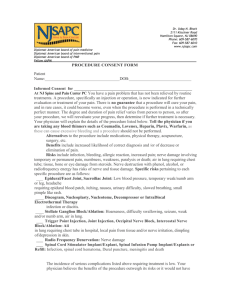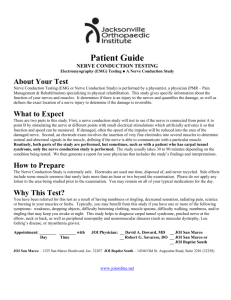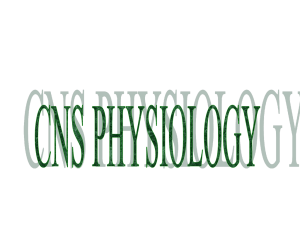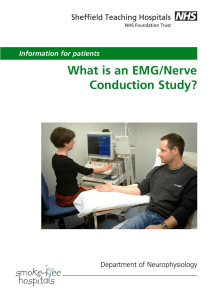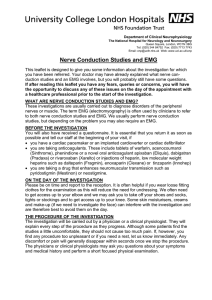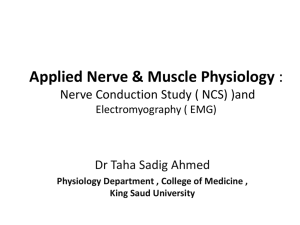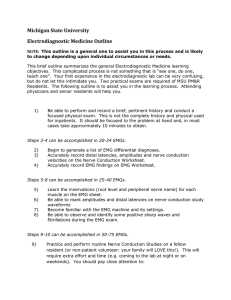How to Prepare for an EMG form - Desert Spine and Sports Physicians
advertisement
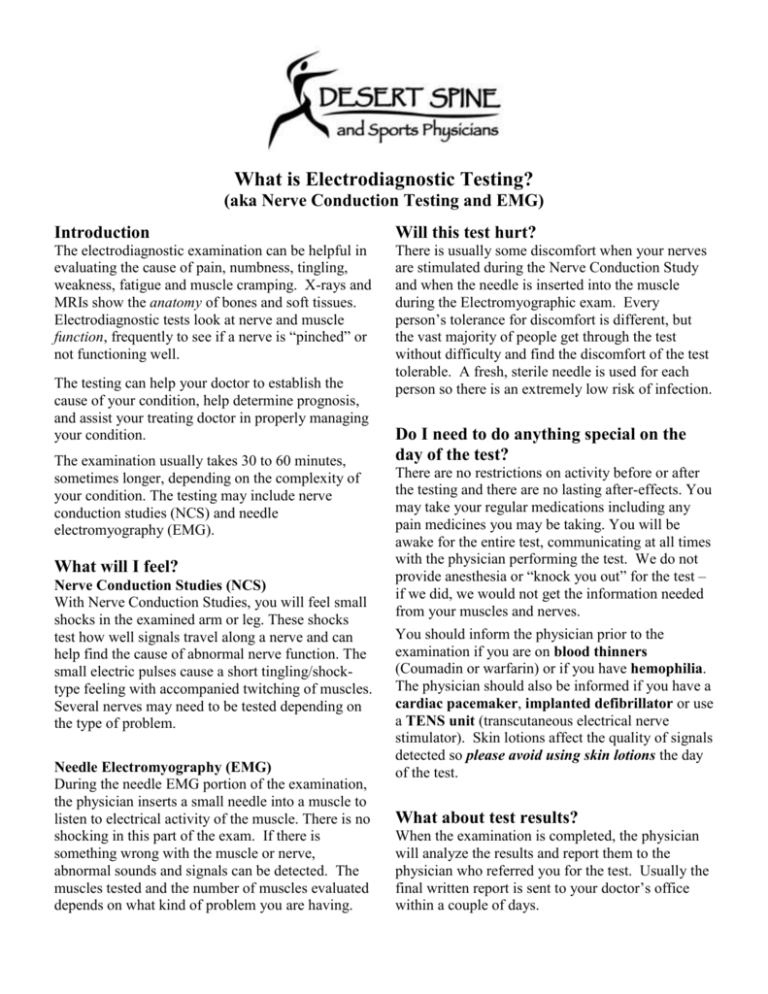
What is Electrodiagnostic Testing? (aka Nerve Conduction Testing and EMG) Introduction Will this test hurt? The electrodiagnostic examination can be helpful in evaluating the cause of pain, numbness, tingling, weakness, fatigue and muscle cramping. X-rays and MRIs show the anatomy of bones and soft tissues. Electrodiagnostic tests look at nerve and muscle function, frequently to see if a nerve is “pinched” or not functioning well. There is usually some discomfort when your nerves are stimulated during the Nerve Conduction Study and when the needle is inserted into the muscle during the Electromyographic exam. Every person’s tolerance for discomfort is different, but the vast majority of people get through the test without difficulty and find the discomfort of the test tolerable. A fresh, sterile needle is used for each person so there is an extremely low risk of infection. The testing can help your doctor to establish the cause of your condition, help determine prognosis, and assist your treating doctor in properly managing your condition. The examination usually takes 30 to 60 minutes, sometimes longer, depending on the complexity of your condition. The testing may include nerve conduction studies (NCS) and needle electromyography (EMG). What will I feel? Nerve Conduction Studies (NCS) With Nerve Conduction Studies, you will feel small shocks in the examined arm or leg. These shocks test how well signals travel along a nerve and can help find the cause of abnormal nerve function. The small electric pulses cause a short tingling/shocktype feeling with accompanied twitching of muscles. Several nerves may need to be tested depending on the type of problem. Needle Electromyography (EMG) During the needle EMG portion of the examination, the physician inserts a small needle into a muscle to listen to electrical activity of the muscle. There is no shocking in this part of the exam. If there is something wrong with the muscle or nerve, abnormal sounds and signals can be detected. The muscles tested and the number of muscles evaluated depends on what kind of problem you are having. Do I need to do anything special on the day of the test? There are no restrictions on activity before or after the testing and there are no lasting after-effects. You may take your regular medications including any pain medicines you may be taking. You will be awake for the entire test, communicating at all times with the physician performing the test. We do not provide anesthesia or “knock you out” for the test – if we did, we would not get the information needed from your muscles and nerves. You should inform the physician prior to the examination if you are on blood thinners (Coumadin or warfarin) or if you have hemophilia. The physician should also be informed if you have a cardiac pacemaker, implanted defibrillator or use a TENS unit (transcutaneous electrical nerve stimulator). Skin lotions affect the quality of signals detected so please avoid using skin lotions the day of the test. What about test results? When the examination is completed, the physician will analyze the results and report them to the physician who referred you for the test. Usually the final written report is sent to your doctor’s office within a couple of days.




